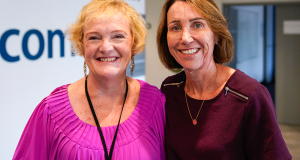
A PAPER by the School of Nursing at Queensland University of Technology in 2000, titled The encultured body: Policy implications for healthy body image and distorted eating behaviours, said Anorexia nervosa is the third most common
chronic illness for adolescent girls in Australia (after obesity and asthma).
A 1998 Newspoll Study said 1 in 20 Australian women admitted to having suffered from an eating
disorder and 1 in 4 individuals knew someone who had.
Eating issues, as Amanda Dearden, coordinator of the Brisbane eating issues centre, Isis, prefers to call them, are indiscriminate.
Eating issues affect women and, increasingly, men, regardless of race, religion, socioeconomic factors, or family support.
The Australian Psychological Society (APS) said eating disorders arise from a complex mix of factors, such as cultural,
personal, genetics and “western society’s idealisation of thinness and the ‘perfect’ body as synonymous with beauty and
success.”
This belief encourages dieting, which predisposes an individual towards eating problems.
“Feelings of inadequacy, depression, anxiety and loneliness, as well as problematic family and personal relationships”
and “a history of the disorder in the family” are all factors according to the APS.
Ms Dearden also added a history of abuse as a possible factor.
An Isis fact sheet said eating issues involve “disturbed eating habits or weight control behaviour that disrupts a person’s physical and psychosocial functioning”.
Ms Dearden said these behaviours can be a form of punishment or control that serve to numb, disconnect, or distract
from thoughts and feelings relating to problems, issues and conflicts.
“We live in a crazy world that tends to pressure us to look a certain way and gives us lots of mixed messages about what is healthy, so sometimes we can actually be doing our body harm, or heading towards dangerous eating patterns without realising it.
“The diet and weight loss industries, for example, are making millions from selling diet tips and basically setting us up to fail in order to profit from ‘self improvement’ marketing and unrealistic comparisons with celebrities and magazine images that contribute to low selfesteem,” she said.
“Instead of focusing on our human rights, such as affordable access to quality forms of nutrition, time to eat, sleep, exercise and finding balance in life, we have become disconnected from our bodies and our health needs.
“We tend to blame individuals for weight problems and fail to recognise diversity – that health and beauty can come in a range of shapes and sizes.
“Both the increase in obesity and eating disorders reflect the unhealthy obsession with thinness in modern society and makes invisible that dieting is actually a risk factor for both of these issues.”
In 1997 a new term was coined by American doctor, Steven Bratman: Orthorexia nervosa – an obsession with healthy eating to the point of damage to the body, physically or emotionally.
In his book Health Food Junkies, Dr Bratman warned of a new form of eating disorder (or at least health phenomena)
particularly affecting young professional women in their 30s.
The key to Orthorexia is obsession to the detriment of health, not just healthy eating.
Recovery from an eating disorder is a very slow process and can take many years, but it is possible.
For families and carers of those suffering, it can be a frustrating, stressful and painful experience but there are many organisations like Isis, Eating Disorders Queensland and The Butterfly Foundation that can assist.
 JourneyOnline
JourneyOnline






